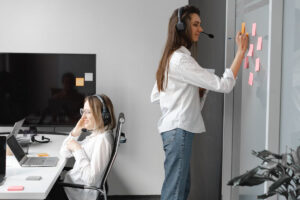The Personal Development Blog
Choosing the Right Artificial Turf for Your Needs
Understanding Your Needs
When it comes to choosing artificial turf, the first step is understanding your specific needs and the purpose of the turf. Are you looking for a lush, green lawn for aesthetic appeal, or do you need a durable surface for a sports field? These considerations will heavily influence your choice. For instance, if you are installing turf in a high-traffic area, durability becomes a priority. Conversely, if the primary goal is to enhance your garden’s appearance, you might focus more on the aesthetic qualities of the turf.
Consider how the turf will be used daily. For families with children or pets, selecting a turf that is soft yet resilient is essential. This ensures a safe playing surface that can withstand wear and tear. On the other hand, for a commercial space, low maintenance and high durability might be more critical. Understanding these needs helps narrow down the options and ensures the turf you choose will serve its intended purpose effectively.
- Identify the primary use of the turf: residential, commercial, or sports.
- Consider the amount of foot traffic the area will experience.
- Assess the climate and weather conditions in your location.
Evaluating Turf Quality and Features
Once you have a clear understanding of your needs, the next step is evaluating the quality and features of different artificial turf options. Quality can vary significantly, so it’s crucial to pay attention to factors such as pile height, density, and material. Pile height refers to the length of the grass blades and can affect both the appearance and feel of the turf. A longer pile height generally gives a more natural look, while shorter blades are easier to maintain and clean.
Density is another critical factor. High-density turf tends to be more durable and offers a better cushioning effect, making it suitable for areas with heavy usage. The material of the turf also plays a role in its performance and longevity. Most artificial turfs are made from polyethylene, polypropylene, or nylon. Polyethylene is known for its softness and natural appearance, making it a popular choice for residential lawns. Polypropylene is less expensive but not as durable, while nylon is the most robust option, ideal for sports fields.
- Check the pile height for aesthetic and functional purposes.
- Evaluate the density for durability and comfort.
- Consider the material based on the intended use and budget.
Installation and Maintenance Considerations
After selecting the right turf, consider the installation and maintenance aspects. Proper installation is crucial for the turf’s performance and longevity. It is advisable to hire professionals who can ensure the turf is laid correctly, with adequate drainage and a level surface. The installation process often involves preparing the ground, laying a base layer, and then securing the turf in place.
Maintenance is another important consideration. While artificial turf is generally low-maintenance compared to natural grass, it still requires some care to keep it looking its best. Regular brushing helps maintain the turf’s appearance and prevents matting. Additionally, occasional rinsing can remove dust and debris, especially in dry climates. Some turfs also require infill materials, which might need periodic replenishment to maintain the turf’s integrity and performance.
- Ensure professional installation for optimal results.
- Regular brushing and rinsing help maintain appearance.
- Check for infill requirements and replenish as needed.









